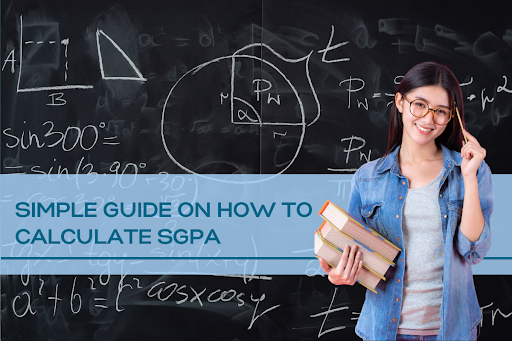The IELTS Exam is a globally acknowledged English language proficiency test, regarded as among the most popular and respected. It is widely accepted by over 10,000 organisations across more than 140 countries, including the USA, UK, Canada, Australia, and many others.
Every year, over three million people take the IELTS exam, which is growing steadily. It comprises 4 sections-
The IELTS Writing Test is different for IELTS Academic and IELTS General. The Academic test will contain topics suitable for anyone entering a university or professional institution. The General Training test will have topics based on general interest.
The Writing test takes 60 minutes, and there are two tasks to complete:
- Task 1: It is recommended to spend 20 minutes on Task 1, which requires you to write at least 150 words.
- Task 2: This task requires at least 250 words and should take about 40 minutes. Task 2 contributes twice as much as Task 1 to your score.
In this blog, we will discuss the latest IELTS Writing Task 1, some examples of answers, the necessary vocabulary, and the criteria for scoring.
Four Factors of Assessment
Your scoring is based on four factors that must be understood beforehand. It can help you improve these skills when you feel they are behind.
Lexical Resource– This assesses your ability to implement collocations, spellings, and a wide range of vocabulary. To score well in this criterion, you must avoid using informal language and the wrong usage of words.
Grammatical Range and Accuracy– The things that are considered in this criterion are sentence construction, usage of tenses, punctuation, and simple and compound sentences.
Task Achievement– This examines your ability to respond to the question. It includes the features and details of the visual information in the essay and the data provided. However, you will be penalised for writing a word count lesser than the given count.
Coherence and Cohesion– This aims to test the paraphrasing skills using linking words such as conjunctions. In addition, the number of paragraphs written are also taken into consideration.
Question. What is a perfect score in IELTS Writing Task 1?
The perfect response to the IELTS Writing Task 1 should meet all the requirements of the given task and have a fully developed response. It should demonstrate a wide range of vocabulary with infrequent minor errors and the ability to use structures flexibly and accurately. Additionally, a well-written response should manage paragraphing and cohesion properly and be able to paraphrase effectively. To achieve a high score, it is essential to organise and present data, describe the steps in a process or describe the modification in the layout represented in maps.
The essay’s body should contain the main content and supporting details, where you write core aspects of your topic and provide evidence and analysis. Finally, the response should have an introduction paraphrasing the given question and an overview summarising the main trends, patterns, or essential features presented in the visual data, highlighting the most significant and noticeable information.l

Excel in IELTS with India’s Top Online Coaching
Leap has helped more than 1 Lakh students achieve 7+ IELTS band.
Latest IELTS Writing Task 1: Academic
In Task 1, you will be asked to describe some information (graph/ table/ chart/ diagram) and present a summary in your own words. The test will assess how well you can:
- Organise and present data.
- Describe the steps in a process.
- Describe the modification in the layout represented in maps.
To do this effectively, ensure your response has three main parts:
- Introduction: Start by introducing the topic and paraphrasing the given question.
- Overview: The overview is a crucial part of Task 1 and summarises the main trends, patterns, or essential features presented in the visual data. It must highlight the most significant and noticeable information.
- Body: The essay’s body will contain the main content and supporting details, where you write core aspects of your topic and provide evidence and analysis.
Question:
You should spend about 20 minutes on this task.
How can you answer this task?
Introduction (1-2 Sentences):
You can begin the report by introducing the task. This involves explaining the report’s purpose and what information will be analysed. In addition, it’s necessary to describe the data presented in the bar graph.
- Example: “The provided data illustrates the comparison of housing trends in England and Wales from 1918 to 2011, specifically focusing on the percentages of rented and owned accommodations.”
Overview (2-3 Sentences):
Provide the significant points and the year-wise percentages of rented or owned accommodations. In this example, we will take rented accommodation in the first paragraph.
- Example: “Overall, rented accommodations constituted approximately 78% of the total in 1918, with a subsequent levelling off observed between 1939 and 1953. However, from 1961 to 2001, there was a significant drop to 32% in rented accommodation, which eventually increased in 2011, reaching 37%.”
Body (2-3 Paragraphs):
Include details about the owned accommodations. Mention the key points and year-wise percentages. Also, highlight any significant differences.
- Example: “During the same period, the ownership of houses increased from 23% in 1918 to 32% by 1953, with a gradual rise between 1961 and 1991. Ownership continued to rise, reaching 69% in 2001. However, ownership declined between 2001 and 2011, with the percentage dropping to 62%.”
Summarise the major points. Highlight any significant trends and differences in the graph.
- Example: “In a nutshell, the housing landscape in England and Wales evolved significantly over the years, with shifts in the rented and owned accommodations. Moreover, 1971 marked a key point in this transformation, where the percentages of both the accommodations stood at 50%.”
Sample Answer
The provided data illustrates the comparison of housing trends in England and Wales from 1918 to 2011, specifically focusing on the percentages of rented and owned accommodations.
Overall, rented accommodations constituted approximately 78% of the total in 1918, with a subsequent levelling off observed between 1939 and 1953. However, from 1961 to 2001, there was a significant drop to 32% in rented accommodation, which eventually increased in 2011, reaching 37%
During the same period, the ownership of houses increased from 23% in 1918 to 32% by 1953, with a gradual rise between 1961 and 1991. Ownership continued to rise, reaching 69% in 2001. However, ownership declined between 2001 and 2011, with the percentage dropping to 62%.
In a nutshell, the housing landscape in England and Wales evolved significantly over the years, with shifts in the rented and owned accommodations. Moreover, 1971 marked a key point in this transformation, where the percentages of both totals stood at 50%.

Excel in IELTS with India’s Top Online Coaching
Leap has helped more than 1 Lakh students achieve 7+ IELTS band.
Latest IELTS Writing Task 1: General
Task 1 asks you to write a letter based on a given situation. The letter can be formal, informal or semi-formal, depending on the situation.
Your assessment depends on your performance and capacity in –
- Setting the right tone for the letter
- Presenting the purpose of the letter
- Delivering in proper structure
Question:
You should spend about 20 minutes on this task.
You work for a company. You have seen some information online about a training course that would be useful for your work.
Write a letter to your manager. In your letter
- Provide details of the course
- Explain the importance of the course
- Explain how the company could help you do this course
Write at least 150 words.
You don’t need to write the address
Start your letter with Dear….,
How can you answer this task?
To answer this IELTS Writing Task 2 question effectively, follow these steps:
Introduction (1-2 Sentences)
You can begin your letter by introducing the course. This can include details such as the course’s location, name, dates, and duration.
“I hope you are doing well. Recently, I came across a course on “Advanced Project Management“. It is an intensive course of eight days. Regex Ltd. organises this course in Bangalore. It will begin from the 1st of November, 2023, to the 8th of November, 2023.”
Body of the letter (3-4 Sentences)
You can continue the body of the letter by directly describing the benefits of the course. And, how will the course be for the profit side of the company?
“The course covers various topics such as project scheduling, resource allocation, risk management, and team leadership. It would give me the necessary skills and knowledge to manage complex projects effectively, benefiting our organisation. I strongly believe that this course would help me improve my performance and significantly contribute to the company.”
Conclusion (1-2 Sentences)
You can conclude the letter by asking permission to attend the course.
“I would appreciate it if the company could support me in attending this course. The course cost is reasonable, and I would only require a few days off. The knowledge and skills I would gain from this course would be invaluable to me and our organisation.”
Final Remarks (1 sentence)
You can mention the final remarks with kind words and thank them in advance.
“I am looking forward to hearing from you.”
“Your Sincerely”
Explore all countries
Vocabulary for Latest IELTS Writing Task 1
Vocabulary is essential to Latest IELTS Writing Tasks as it determines your language proficiency. It is one of the fundamental criteria for achieving a high band score in the IELTS exam.
The IELTS Writing Tasks require you to express your ideas, opinions, and arguments clearly and concisely. Therefore, having a good vocabulary will enable you to use a range of words and phrases appropriately, enhancing the quality of your writing.
Below is some vocabulary for the following words:
For linking words:
You have to support the points they made in the essay. You can use these words to inform the examiner of the additional ideas:
- In addition
- Not only…but also
- Also
- Moreover
- And
- As well as
- Furthermore
For lists:
You can make use of listings to organise their ideas sequentially. These connectors can be implemented:
- Firstly
- Secondly
- Thirdly
- Fourthly
- Finally, lastly, or last but not least
For examples:
Generally, you must provide examples to support their statement. It is essential to use a wide range of cohesive devices while writing the essay and with examples:
- For instance
- For example
- To cite an example
- To illustrate
- Namely
- Such as
- In other words
For highlighting key features
You can use these connectors to explain the result of something:
- Specifically
- Especially
- In particular
- Particularly
- Obviously
- Clearly
- Of course
To state consequences
When you want to explain the result of something, these linking devices are somewhat helpful:
- As a result
- Therefore
- Thus
- Consequently
- For this reason
- So
- Hence
To illustrate the causes and reasons
You must provide reasons for a particular statement, and using these can be beneficial:
- Due to
- Because
- Owing to
- As
- Since
For conclusion
You must use cohesive devices while concluding your essay:
- To sum up
- To conclude
- In conclusion
For describing trends
You can use these to describe trends in the bar graphs.
- Fluctuation
- Growth
- Slump
- Variation
- Upsurge
- Uplift
- Rocketed
- Soar
- Peak
- Marginal
- Minor Small
- Modest
- Over the next three days
- Three days
- The following three days
- From this to that
- Between this and that
- At the beginning of the period
For describing increase/decrease
You can follow the possible pairings for increase and decrease:
- Rises
- Increases
- Decreases
- Declines
- Plunges
- Drops
- Falls
- Goes up
- Surge
- Rocketed
- Went down
- Growth
For comparison:
These can be used to give comparisons.
- Surpasses
- Equals
- More than
- Less than
- Greatest
- Least
- Lesser
- Smaller
- Larger
- Greater
For summary:
You must present a summary with the main details to meet the criteria for task achievement.
- As it is observed
- It can be seen that
- At first glance
- It is evident from the chart
- Generally speaking
- In general
- Overall
- A glance at the graph reveals that
Tips for writing IELTS Writing Task 1
The IELTS Writing Task 1 requires you to describe and summarise visual information, such as graphs, charts and diagrams. Here are some tips to help you score higher bands in your IELTS Writing Task 1.
- Carefully read the prompt– Ensure the visual information in the question and deliver what you must.
- Use a wide range of vocabulary– You should use a variety of vocabulary, including the ones in the question.
- Organise your response– Plan your response by organising your sentences into paragraphs, which include an introduction, body and conclusion.
- Use accurate data comparison language: You should use accurate “more than” and “less than” to highlight the differences and similarities in the data.
- Use correct tenses: Use the correct tenses in your letters, such as the past, present and future.
- Check your work: Proofread your work for spelling, grammar and punctuation errors.
- Practice Questions: To ensure that you have a good understanding, it is recommended that you practice various types of questions.
Following these tips can increase your chances of scoring high on the IELTS Writing Task 1.
Final Thoughts
The latest IELTS Writing Task 1 requires you to demonstrate your ability to describe and summarise visual information accurately and effectively.
Understanding the question, using a vast vocabulary, organising your response, using accurate data comparison language, using correct tenses, checking your work, and practising various questions are essential.
Do you need help in mastering the IELTS Writing Test?
The exam requires a thorough understanding of the exam pattern and efficient time management.
Mock tests are great for IELTS prep, but what else?
Sign up for Leap Scholar’s IELTS Demo and Masterclass to interact with a Master Cambridge-certified IELTS trainer!
What will you get?
- A 30-minute long session
- A band predictor test
- A personalised IELTS prep plan and more!
Don’t miss out on the opportunity to boost your IELTS scores!
Frequently Asked Questions
-
Q. What is task 1 of IELTS Academic Writing?
A. In the IELTS Writing Task 1, you will be presented with a visual representation of data (such as a graph, chart, table or diagram) and asked to describe and analyse it in your own words. The main objective is to test how well you can organise and present the data and describe any trends or patterns you observe. You should spend about 20 minutes on this task.
-
Q. How can I get 6.5 in IELTS writing task 1?
A. To get a 6.5 in IELTS Writing Task 1, you must improve your grammar, vocabulary, and sentence structure. Practice writing different reports and essays, and get feedback from a tutor or native speaker.
Analyse and understand the task requirements and the data provided, and organise your ideas logically.
Use appropriate linking words and phrases, and avoid making spelling and punctuation errors. Finally, aim to write at least 150 words and manage your time effectively during the exam. -
Q. How do I start writing Task 1?
A. To start writing Task 1, carefully read the instructions and understand the question. Then, you should start planning your answer by identifying the key points and structuring them logically. Use appropriate language and grammar to present the information clearly and accurately. Finally, remember to proofread your work before submitting it.
-
Q. Can I retake IELTS writing only?
A. IELTS One Skill Retake is a recently introduced feature that allows you to enhance your scores on a specific skill without retaking the entire IELTS exam. If you wish to improve your performance on any of the four skills – Listening, Reading, Writing, or Speaking – you can redo only that skill. This feature can save you time and money as you won’t need to retake the test.
-
Q. Is the IELTS Writing Test the same for Academics and General?
A. No, the IELTS Writing Test is different for Academics and General. The Academic Writing Test includes two tasks assessing your ability to describe visual information and write an essay responding to an argument or problem. The General Writing Test consists of two tasks to evaluate your ability to write a letter and an essay on a topic.
-
Q. What is the IELTS Writing Task 1 for General?
A. The IELTS Writing Task 1 for General is a written exam that assesses your ability to write a letter in response to a given situation. The letter can be formal, semi-formal, or informal in style and should be at least 150 words long. The task requires you to provide, request, or explain a situation. The letter is assessed on your ability to organise ideas, use appropriate language, and convey the intended message effectively.
-
Q. What is the duration of the IELTS Writing Test?
A. The IELTS Writing Test consists of two tasks that must be completed within 60 minutes. Task 1 requires you to summarise, describe or explain a visual representation such as a graph, chart or diagram in 150 words. Task 2 requires you to write an essay responding to a given prompt in 250 words. You should spend approximately 20 minutes on Task 1 and 40 minutes on Task 2.
-
Q. How is the IELTS Writing Test assessed, and what are the criteria for scoring?
A. The IELTS Writing Test is assessed based on four criteria: Task Achievement, Coherence and Cohesion, Lexical Resource, and Grammatical Range and Accuracy. Each criterion is given equal weightage, and the final score is an average of the scores in each category. Your ability to present ideas, organise information, and use appropriate vocabulary and grammar is evaluated.
-
Q. What are some valuable tips for preparing for the IELTS Writing Test?
A. To prepare for the IELTS Writing test, it is important to practice writing regularly. Familiarise yourself with the test format and timing, and develop your skills in organising and expressing your thoughts clearly and coherently. Pay attention to grammar, spelling, and punctuation, and aim to use a range of vocabulary and sentence structures. Seek feedback from a teacher or tutor to identify areas for improvement and practice writing under test conditions.
-
Q. What is the IELTS Writing Task 2?
A. The IELTS Writing Task 2 is an essay writing task that assesses your ability to present and support an opinion on a topic. It is different for the Academic and General Training tests. You must write at least 250 words and have 40 minutes to complete this task. The essay should have a clear introduction, body, and conclusion and should demonstrate a wide range of vocabulary and the ability to use structures flexibly and accurately.
-
Q. What is the scoring system for the IELTS Exam?
A. The IELTS exam is scored on a scale of 0 to 9, with 0 being the lowest possible score and 9 being the highest. Each of the four sections (Reading, Writing, Speaking, and Listening) is scored separately, and then these scores are combined to give an overall band score. The band score indicates your proficiency level in English, with level 1 being a non-user and level 9 being an expert user. A score of at least 6 is usually required for most academic and professional purposes.















Have Questions? Get Guidance to reach your Dream University
Connect with India's finest counsellors and biggest study abroad community.
Get Guidance